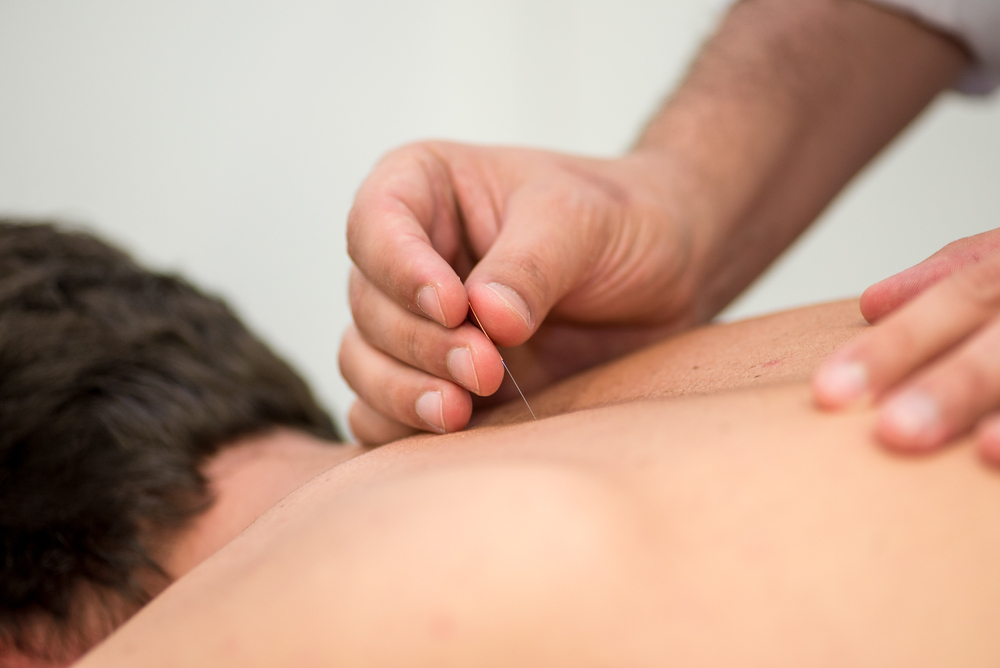What Should You Expect During a Dry Needling Session?

Dry needling is a therapeutic technique that has gained significant popularity in recent years as a non-invasive way to manage various musculoskeletal and neurological conditions. It involves the strategic insertion of thin, sterile needles into specific trigger points or myofascial areas to alleviate pain, improve mobility, and promote healing.
What is Dry Needling and How Does It Work?
Dry needling is a technique that targets the body's soft tissues, including muscles, tendons, and connective tissues. The procedure involves the use of solid, filiform needles that are inserted into specific areas known as trigger points. These trigger points are sensitive areas within the muscle that can contribute to pain, stiffness, and limited range of motion.
When the needle is inserted into a trigger point, it can elicit a localized twitch response, which is a natural reflex of the muscle. This twitch response helps to release the tightness and tension within the muscle, allowing it to relax and function more efficiently.
Conditions and Situations Where Dry Needling is Recommended
Dry needling can be an effective treatment for a variety of musculoskeletal and neurological conditions, including:
Chronic pain conditions:
- Neck and shoulder pain
- Lower back pain
- Headaches and migraines
- Tendinitis
- Plantar fasciitis
Movement and mobility issues:
- Restricted range of motion
- Muscle tightness and spasms
- Postural imbalances
- Sports-related injuries
Neurological conditions:
- Sciatica
- Carpal tunnel syndrome
- Peripheral neuropathy
- Neuralgia
Your healthcare provider will assess your condition and determine if dry needling is an appropriate treatment option for your specific needs.
What to Expect During a Dry Needling Session
Your healthcare provider will conduct a thorough assessment of your condition, including a review of your medical history, symptoms, and any previous treatments. They will also perform a physical examination to identify the specific trigger points or areas of concern.
Based on the assessment, your healthcare provider will develop a customized treatment plan that outlines the specific areas to be targeted during the dry needling session. You will be asked to lie down on a treatment table, and the area(s) to be treated will be cleaned with an antiseptic solution to ensure sterility. Your healthcare provider will carefully insert the thin, sterile needles into the identified trigger points. You may feel a slight pinching or aching sensation as the needle is inserted, but this is generally well-tolerated.
Once the needles are in place, your healthcare provider may gently manipulate or stimulate them to elicit the desired muscle response, such as a localized twitch. The needles are typically left in place for a few minutes, allowing the muscle to relax and the treatment to take effect.
After the treatment, the needles will be carefully removed, and your healthcare provider will provide any necessary aftercare instructions, such as applying ice or performing gentle stretches.
The specific details of your dry needling session may vary depending on your individual needs and the healthcare provider's approach. Some providers may also incorporate additional techniques to enhance the effectiveness of the treatment.
Benefits of Dry Needling
Dry needling can offer a range of benefits, including:
- Pain Relief: The treatment can help reduce pain and discomfort associated with various musculoskeletal and neurological conditions by releasing muscle tension and improving blood circulation.
- Improved Mobility: By addressing muscle tightness and trigger points, dry needling can help improve range of motion, flexibility, and overall movement.
- Enhanced Healing: The treatment can promote the body's natural healing process by stimulating the release of various biochemicals and promoting tissue regeneration.
- Reduced Muscle Spasms: Dry needling can help alleviate muscle spasms and cramps, which can be a common source of pain and discomfort.
- Decreased Headaches and Migraines: For individuals experiencing tension-type headaches or migraines, dry needling can be an effective treatment option by targeting the underlying muscle tension and trigger points.
- Increased Overall Function: By addressing the root causes of your condition, dry needling can help improve your overall physical function and quality of life.
Book Your Consultation with Cashae Spine & Sports Today
Dry needling can be a highly effective and safe treatment option for a wide range of musculoskeletal and neurological conditions. By understanding what to expect during a dry needling session and following the recommended aftercare and recovery tips, you can maximize the benefits of this therapeutic technique and take an active role in your own healing and recovery process.
If you're interested in exploring dry needling as a treatment option, schedule a consultation with Cashae Spine & Sports. We can assess your specific needs and develop a personalized treatment plan to help you achieve your health and wellness goals. Visit our office in Silver Spring, Maryland, or call (240) 219-8975 to book an appointment today.





